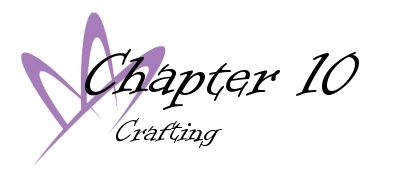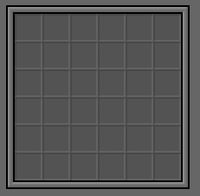Journey: Crafting
Crafting is the third major mechanical subsystem, and - as one of the "big three" - utilizes another metagame mechanic to give it a different feel from other aspects of the game.
Contents
Purpose
Crafting is intended to play a large role in Journey. While finding equipment ready-made is not necessarily difficult, it is sometimes easier to find the raw materials needed to make an item - which requires someone to process and refine into whatever it is you need.
Crafting is also important in that it propels the economy of Journey. Without a functioning crafting system, a large part of the economic system in place necessarily becomes transparent, which can lead to issues with attempting to convey a functioning economic system.
In addition, as one of the "big three," crafting utilizes a metagame mechanic that separates it from combat and social encounters. Where combat rewards tactical thinking and social encounters reward roleplaying, the crafting mechanics reward puzzle-solving ability. If you are not good at puzzles, it is not a necessary component, but the nature of crafting items is such that puzzles are able to provide a reasonable abstraction of what is going on in the crafting process - thus those who choose to interact with that particular part of the system are rewarded for doing so.
Basic Crafting
Basic crafting - crafting without making use of the meta mechanic - is rather straightforward.
(We'll talk about this later.)
Complex Crafting: Puzzles
If you felt that the basic crafting rules did not suffice for crafting, then the complex crafting rules are for you.
Just as with complex combat and complex social encounter rules, however, the complex crafting rules are not necessarily a reflection of your characters' abilities. While the framework is based upon the mechanics of the game itself, when it comes down to it, it is you - the player - who is solving the puzzle, not your character. While your character's abilities and the materials being worked with will modify the nature of the puzzle to be solved, when it comes down to it, it is you and the puzzle.
Starting the Complex Crafting Process
Begin just as you would with basic crafting. When you have the end result, however, do not begin to assign qualities and drawbacks whose total adds up to the result. Instead, you will be given a board, the size of which is determined by the result.
(Table for result => board size goes here.)
Once you have determined the size of the crafting board, then you must determine where any irregularities in the crafting material are located. Lower-quality materials are more likely to have impurities, which diminish your ability to improve the item; similarly, higher-quality materials are less likely to have impurities, allowing you to produce a better-crafted piece of equipment.
The DM has access to rules determining the number and placement of impurities, based upon the quality and type of material you are working with.


